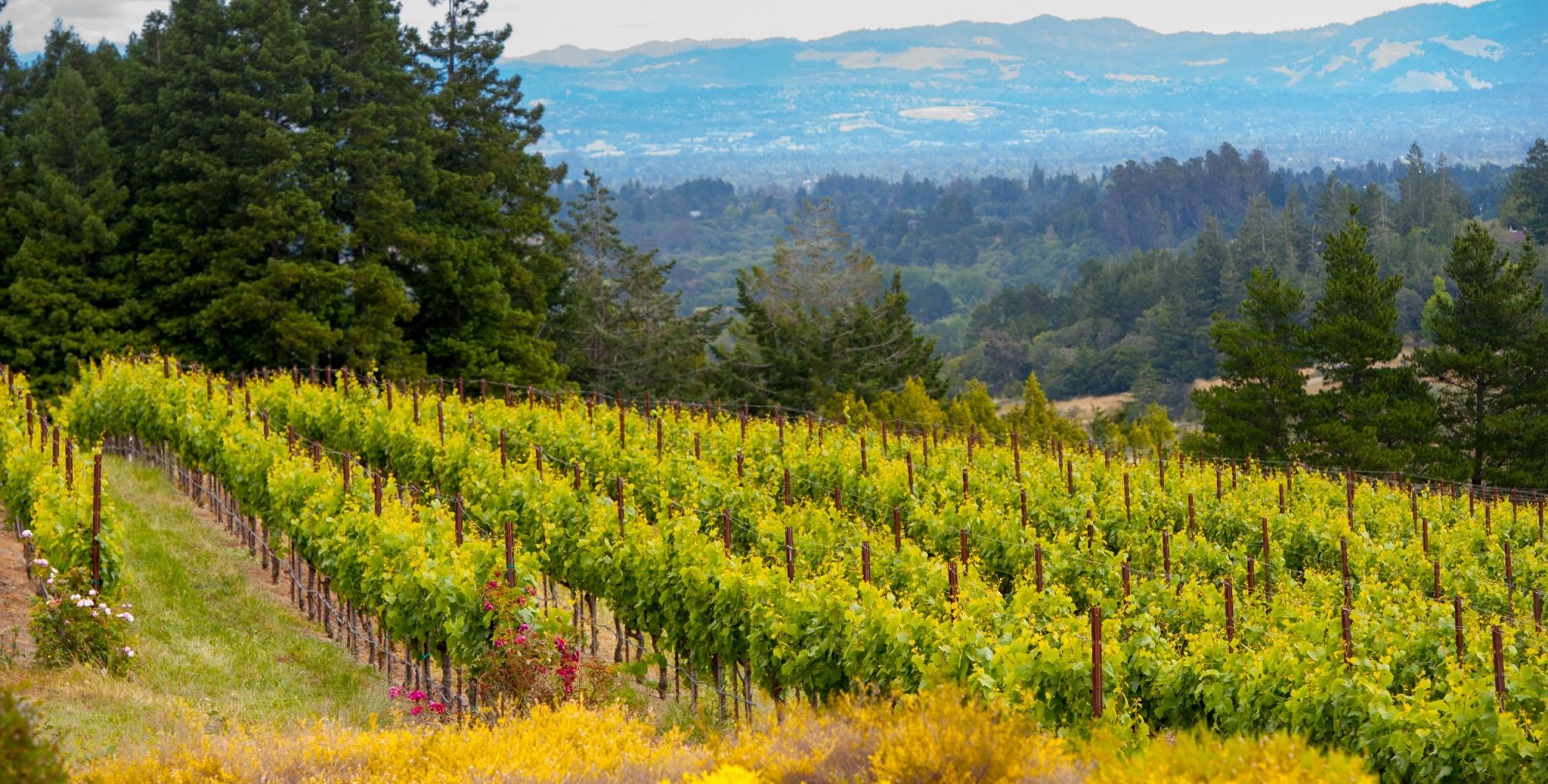$35 Flat Rate Ground Shipping on Orders of 6 or More Bottles

Last time I shared some thoughts on some of the thing’s winemakers have in mind as harvest approaches. We are now past the point where the vines are “actively” growing and the efforts of the plants are now to get the fruit “to maturity” before winter, that is to say the plant should no longer be creating new leaves and arms / canes (“wood”) but are instead plumping up the berries and producing the compounds (molecules) that are the colors, aromas, and flavors that the wine drinker experiences.
The chemistry of the berry changes dramatically during this period. Changes in “acidity” occur. The two main acids produced in grapes (that concern the winemaker) are tartaric acid and malic acid. Both are “organic” acids as they are produced by the plant metabolism. Anyone who has taken a bite of a “granny smith” or “pippin” apple knows what malic acid tastes like, in other words the “taste” of malic acid is that of “green apple”. Tartaric acid does not have as much of a “flavor” signature and is (more) “tactile” in terms of the impression of “tartness” or “acidity” in wine. When you see winemakers’ notes, you will often see references to “TA” and “pH”. The TA is a reference to the “total acids” in a wine (NOT particularly “scientific”, but it is quantifiable) and of course the amount of “acid” in wine will affect its pH, although different acids have different effects, most wine acids are considered to be pretty weak organic acids.
This is all a little busy, so the important thing to remember is that these acids can / will have a dramatic effect on “mouth feel” (and also some microbiological and chemical “stability”) If a wine has a lot of acids when it is finished, it will be “acidic”, if low on acidity, the wine can be “flat “. How the winemaker manipulates the acid levels can make a wine seem “fresh and fruity” or “generous and mouth filling”. In addition the color of the wine will change, if ( more ) acidic, the wine will be more towards “ bright red / garnet “, less acidity can make the wine deep blue / purple.
Colder climate wines, say for example white wines of Burgundy, (I would include German / Austrian whites but the discussion will be about the conversion of malic acid which is generally NOT done with those varietals) can produce wines with a lot of acidity (think champagne). Malic acid can be present in good quantities in this environment. When during fermentation, the bacteria that convert malic acid to a weaker acid (the “malo lactic bacteria”), such a conversion creates lactic acid, a “weaker” acid (not as tart) and the wine can now take on a “softer / richer” tactile personality. Other compounds that have flavor and aromatic impacts are also produced that are generally considered preferable to some extent. “Traditional barrel fermented chardonnays” fall into this way of managing some of the acidity of the wine.
As the grapevines continue to take up water (and all the other things they get from the soils) they also produce increasing amounts of sugar. More sugar will produce more subsequent alcohol levels, so more is certainly not always “better”. Most of the color compounds (which there are many) produced are located in the skins of the grape. These compounds will subsequently be “extracted” during the fermentation.
I’ve kind of “gotten ahead” in the discussion so to bring it back, it is to note that as the winemaker is in the vineyard during this period, tasting the grapes and performing the chemical analysis of the juice, it is always in the winemakers’ mind how the wine will “turn out “based on the flavor / aromatic / chemical profile of the juice samples. With many harvests from a familiar vineyard, a winemaker can envision pretty closely how the wine will smell, taste, and “feel” (in the mouth) long before the grapes are actually picked. It then becomes a fun game of comparing to previous vintages. If the vintage year seems hot or cold, the winemaker out in the vineyard should have time to adjust some of the farming practices to bring the crop chemistry into a place that will produce “the best wine” possible and still have juice chemistry that won’t be too difficult to deal with in the cellar.
Next time we will look at what are the (actual) flavors and aromas of the grapes as they ripen near harvest and what is desired